 As the COVID-19 2020 news headlines continue to dominate, the American public is facing an onslaught of information about the pandemic. Social and traditional media are covering developments, spreading opinions, and broadcasting statistics about COVID-19. There has been a strong association between coronavirus media coverage and an increase in public attention on the virus itself and in web searches for such terms as “N95” face masks.1 The role of media in the COVID-19 pandemic is significant in shaping public behavior, so as we head into the next phase of the pandemic, journalists and the general public are being forced to consider what role the media should assume moving forward.
As the COVID-19 2020 news headlines continue to dominate, the American public is facing an onslaught of information about the pandemic. Social and traditional media are covering developments, spreading opinions, and broadcasting statistics about COVID-19. There has been a strong association between coronavirus media coverage and an increase in public attention on the virus itself and in web searches for such terms as “N95” face masks.1 The role of media in the COVID-19 pandemic is significant in shaping public behavior, so as we head into the next phase of the pandemic, journalists and the general public are being forced to consider what role the media should assume moving forward.
Some people complain that the media is biased and that it is difficult to find neutral sources of information.2 In addition, misinformation about the COVID-19 pandemic continues to run rampant on social media.3 This climate of mistrust and misinformation can lead to real-world problems, amplified by crisis situations: empty shelves, shortages of vital goods, and racism towards people of Asian descent.4
Some say that the 24-hour news cycle is becoming a place where too much information, delivered all at once, creates challenging threads for the American public to untangle in order to get an accurate understanding of the progression of the virus.5 This cycle has the negative effect of drowning out the voices and advice of public health officials.6 There are also some news sources that characterize potential vaccines and treatments for the virus in ways that create a false sense of security.7
However, there are journalists who have done crucial reporting on what President Donald Trump has said, and how, at times, his comments have contrasted with comments from experts at the Centers for Disease Control and Prevention and the World Health Organization. There has been an analysis that puts U.S. news in the context of the greater global outbreak of the virus.8 And there has been news that criticizes the U.S. response to the coronavirus and offers solutions on the basis of what other countries have done and what leading experts and academics recommend. However, the problem still remains: there is no certainty during this time due to a lack of discrete medical analysis, medical testing, and length of experience with COVID-19.
We also see some media coverage that aims to unify the country during the pandemic. News stories and op-eds have called for citizens to stay home, volunteer, and donate to organizations that support front-line healthcare workers and those in need.9 Local news agencies, individuals, and even TV show franchises have taken on the task of inspiring national unity and promoting hope, including former President George W. Bush and the cast of “Parks and Recreation,” showing that “Americans across the country are making their own decisions for our collective well-being.”10
Some news sources and media outlets play these roles simultaneously, sending mixed signals and making it difficult to get the most accurate information and analysis. Scientists and experts are also struggling with this phenomenon because they are still trying to learn and make sense of something they have never seen before.11 This requires all of us to be critical consumers of media; it also raises questions about the responsibilities and roles of news outlets.
Discussion Questions:
- What is your level of engagement with the news and media during the COVID-19 pandemic?
- What do you believe should be the role of media during a crisis situation like the pandemic?
- Do you believe that national media outlets should have coordinated with each other, as well as with the federal government, to have a similar targeted response to covering COVID-19?
- During a crisis, should the media trust and amplify messages from government officials, or be skeptical of those messages?
- With the pandemic taking place during the build-up toward a presidential election, do you believe that COVID-19 headlines and coverage is being heavily influenced by the current political climate of the United States? Why or why not?
Other Resources:
- To engage with your class about the reliability of the news, please see our virtual lesson plan on Five Questions to Identify Reliable Media Content.
- To engage with your class about the construction of media and its biases, please see our virtual lesson plan on Constructing Media Bias.
Featured Image Credit: Dan Simon/CNN
[1] Real Clear Politics: https://www.realclearpolitics.com/articles/2020/03/02/media_coverage_and_coronavirus_panic_what_the_numbers_show_142539.html
[2] Gallup: https://news.gallup.com/poll/225755/americans-news-bias-name-neutral-source.aspx
[3] PBS Newshour: https://www.pbs.org/newshour/show/the-dangerous-global-flood-of-misinformation-surrounding-covid-19
[4] The Bulletin: https://thebulletin.org/2020/03/coronavirus-coverage-where-the-media-have-gone-wrong/
[5] Ibid.
[6] Ibid.
[7] The Bulletin: https://thebulletin.org/2020/03/coronavirus-coverage-where-the-media-have-gone-wrong/
[8] U.S. News & World Report: https://www.usnews.com/news/best-countries/articles/2020-02-07/how-the-global-media-covered-stories-about-the-coronavirus-outbreak
[9] Real Clear Politics: https://www.realclearpolitics.com/articles/2020/03/02/media_coverage_and_coronavirus_panic_what_the_numbers_show_142539.html
[10] New York Times: https://www.nytimes.com/2020/05/03/us/politics/george-w-bush-coronavirus-unity.html; Variety: https://variety.com/2020/tv/news/parks-and-rec-reunion-special-covid-19-1234588655/; The Atlantic: https://www.theatlantic.com/ideas/archive/2020/03/inspiring-galvanizing-beautiful-spirit-2020/608308/
[11] Vox: https://www.vox.com/recode/2020/4/13/21214114/media-coronavirus-pandemic-coverage-cdc-should-you-wear-masks
 s COVID-19 has spread across the country and the globe, most U.S. states have taken to issuing shelter-in-place orders to help “flatten the curve.” As of April 20, 42 states, the District of Columbia, and Puerto Rico had asked residents to stay at home. However, over the past two weeks, there has been an increase in protests against these orders, with some governors considering reopening their states for the sake of the economy.1
s COVID-19 has spread across the country and the globe, most U.S. states have taken to issuing shelter-in-place orders to help “flatten the curve.” As of April 20, 42 states, the District of Columbia, and Puerto Rico had asked residents to stay at home. However, over the past two weeks, there has been an increase in protests against these orders, with some governors considering reopening their states for the sake of the economy.1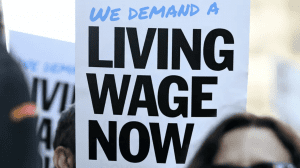 Inequality has been a central issue of the 2020 presidential campaign, with many of the candidates including economic and income equity as major elements of their message.1 The COVID-19 outbreak has also placed economic inequality in the spotlight. While many professionals and white-collar workers are able to work from home, employees in the service industry are either continuing to work or going without pay.2
Inequality has been a central issue of the 2020 presidential campaign, with many of the candidates including economic and income equity as major elements of their message.1 The COVID-19 outbreak has also placed economic inequality in the spotlight. While many professionals and white-collar workers are able to work from home, employees in the service industry are either continuing to work or going without pay.2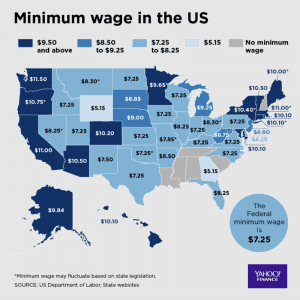
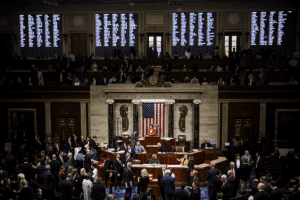 Due to the ongoing COVID-19 pandemic, 42 states—along with Puerto Rico and Washington, D.C.—have issued stay-at-home orders, effectively barring at least 316 million Americans from going out unless absolutely necessary.1 While essential businesses and services remain open, many workers now find themselves working from home. Considering the circumstances, should Congress also be allowed to vote remotely?
Due to the ongoing COVID-19 pandemic, 42 states—along with Puerto Rico and Washington, D.C.—have issued stay-at-home orders, effectively barring at least 316 million Americans from going out unless absolutely necessary.1 While essential businesses and services remain open, many workers now find themselves working from home. Considering the circumstances, should Congress also be allowed to vote remotely?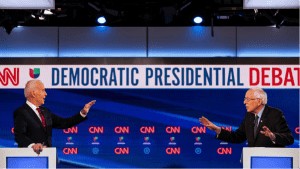 With COVID-19 dominating both the headlines and the realities of everyday life in the United States, it can be hard to remember that we are in the midst of a presidential primary with a general election only seven months away.
With COVID-19 dominating both the headlines and the realities of everyday life in the United States, it can be hard to remember that we are in the midst of a presidential primary with a general election only seven months away.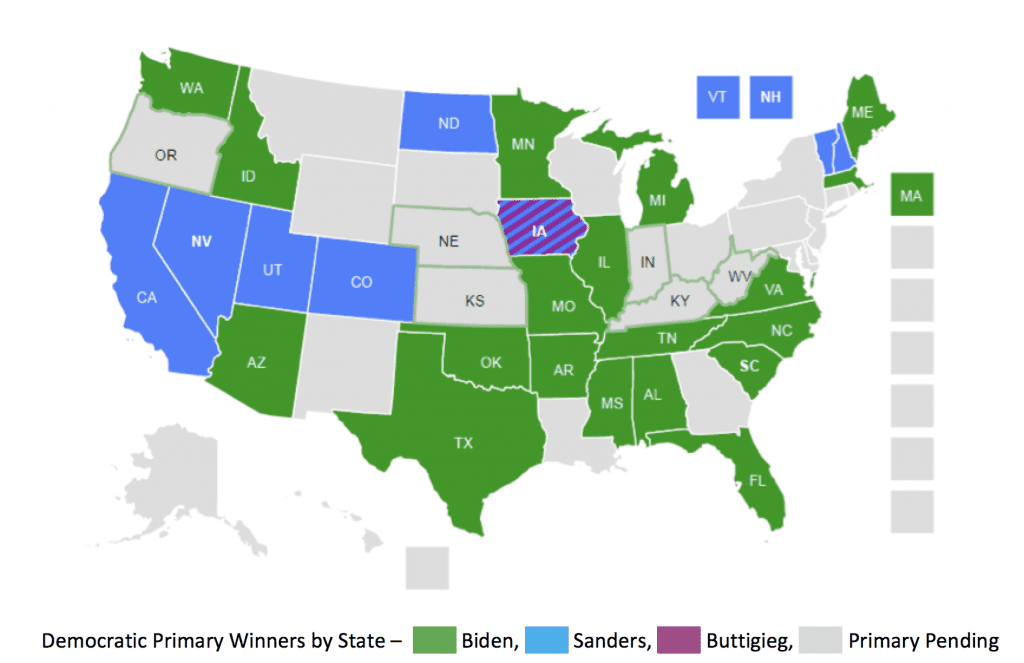 Primary Postponements
Primary Postponements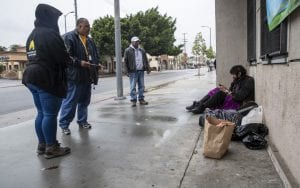 The novel coronavirus, COVID-19, is affecting every American and people all over the world, but it does not affect everyone equally. The more than 500,000 Americans who are homeless are especially vulnerable—due to age, lack of access to health care, underlying medical conditions, and lack of access to information and news—and also pose a risk in terms of continuing to spread the virus.1
The novel coronavirus, COVID-19, is affecting every American and people all over the world, but it does not affect everyone equally. The more than 500,000 Americans who are homeless are especially vulnerable—due to age, lack of access to health care, underlying medical conditions, and lack of access to information and news—and also pose a risk in terms of continuing to spread the virus.1 In the face of the spreading COVID-19 pandemic, government officials and medical experts are calling on people all over the world to practice social distancing.1 In general, this means canceling events and gatherings, avoiding large groups and crowds, and, when possible, staying home.
In the face of the spreading COVID-19 pandemic, government officials and medical experts are calling on people all over the world to practice social distancing.1 In general, this means canceling events and gatherings, avoiding large groups and crowds, and, when possible, staying home. The COVID-19 (coronavirus) outbreak is believed to have started at a wildlife market in Wuhan, China, in December 2019. It is unclear which species transferred the virus to humans, but scientists largely agree on the point of origin.1 The 2002 outbreak of SARS, another type of coronavirus, began under similar circumstances.2
The COVID-19 (coronavirus) outbreak is believed to have started at a wildlife market in Wuhan, China, in December 2019. It is unclear which species transferred the virus to humans, but scientists largely agree on the point of origin.1 The 2002 outbreak of SARS, another type of coronavirus, began under similar circumstances.2 In February, Representative Ro Khanna (D-Calif.) introduced the Gender Inclusive Passport Act (H.R. 5962) in the House of Representatives. The legislation currently has 25 cosponsors, all of them Democrats.1 If the bill becomes law, it would create a third gender designation on U.S. passports—unspecified (X)—to join the existing designations of male (M) and female (F).2
In February, Representative Ro Khanna (D-Calif.) introduced the Gender Inclusive Passport Act (H.R. 5962) in the House of Representatives. The legislation currently has 25 cosponsors, all of them Democrats.1 If the bill becomes law, it would create a third gender designation on U.S. passports—unspecified (X)—to join the existing designations of male (M) and female (F).2 Public health officials first encountered COVID-19, popularly called the coronavirus, in Wuhan, China, in December 2019. Thus far, the virus has infected over 89,000 people, killing more than 3,000.1 In the United States, there have been more than 100 cases in 15 states; at least six people have died, all of them in Washington state.2 The Trump administration, the Centers for Disease Control and Prevention, and the World Health Organization insist that the threat of the coronavirus is still manageable, all the while taking precautions to attempt to contain the outbreak.
Public health officials first encountered COVID-19, popularly called the coronavirus, in Wuhan, China, in December 2019. Thus far, the virus has infected over 89,000 people, killing more than 3,000.1 In the United States, there have been more than 100 cases in 15 states; at least six people have died, all of them in Washington state.2 The Trump administration, the Centers for Disease Control and Prevention, and the World Health Organization insist that the threat of the coronavirus is still manageable, all the while taking precautions to attempt to contain the outbreak. The outbreak has also raised another important equity issue: the ability to take time off work. It is recommended that people who are feeling sick or are worried that they may have been exposed to the coronavirus stay home from work or school and avoid public spaces.7 However, doing so is not always possible for hourly employees in the service industry, such as restaurant and retail workers.8 This has called attention to issues such as paid time off9 and employment security.10
The outbreak has also raised another important equity issue: the ability to take time off work. It is recommended that people who are feeling sick or are worried that they may have been exposed to the coronavirus stay home from work or school and avoid public spaces.7 However, doing so is not always possible for hourly employees in the service industry, such as restaurant and retail workers.8 This has called attention to issues such as paid time off9 and employment security.10






